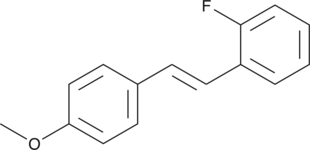Description
An active metabolite of haloperidol; formed via reduction of haloperidol by ketone reductase; inhibits radioligand binding to sigma-1 and dopamine D2 receptors (Kis = 1.4 and 31 nM, respectively); stimulates BDNF secretion from CCF-SSTG1 and U87MG astrocytic glial cells; inhibits norepinephrine, dopamine, and 5-HT reuptake (Kis = 21, 25, and 33 μM, respectively, in COS-7 cells expressing the human transporters); increases latency to paw withdrawal in mouse models of capsaicin-induced mechanical hypersensitivity at 0.5 mg/kg
Formal name: 4-(4-chlorophenyl)-α-(4-fluorophenyl)-4-hydroxy-1-piperidinebutanol
Synonyms: Haloperidol Metabolite II
Molecular weight: 377.9
CAS: 34104-67-1
Purity: ≥98%
Formulation: A solid
Product Type|Biochemicals|Receptor Pharmacology|Antagonists||Product Type|Biochemicals|Transporter & Exchanger Modulators||Product Type|Biochemicals|Xenobiotic Metabolites||Research Area|Neuroscience|Pain Research


